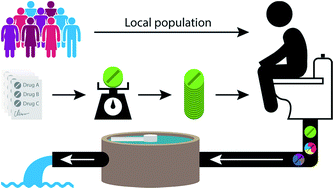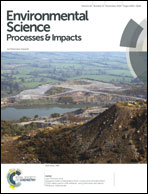Parameterization of pharmaceutical emissions and removal rates for use in UK predictive exposure models: steroid estrogens as a case study†
Abstract
Newly available prescription data has been used along with census data to develop a localised method for predicting pharmaceutical concentrations in sewage influent and effluent for England, and applied to a case study: the steroid estrogens estrone, 17β-estradiol, and 17α-ethinylestradiol in a selected catchment. The prescription data allows calculation of the mass consumed of synthetic estrogens, while use of highly localised census data improves predictions of naturally excreted estrogens by accounting for regional variations in population demographics. This serves two key purposes; to increase the accuracy of predictions in general, and to call attention to the need for more accurate predictions at a localised and/or catchment level, especially in light of newly proposed regulatory measures which may in the future require removal of steroid estrogens by sewage treatment facilities. In addition, the general lack of measured sewage works data necessitated the development of a novel approach which allowed comparison of localised predictions to average national measurements of influent and effluent. Overall in the case study catchment, estrogen predictions obtained using the model described herein were within 95% confidence intervals of measured values drawn from across the UK, with large improvements to predictions of EE2 being made compared with previous predictive methods.


 Please wait while we load your content...
Please wait while we load your content...